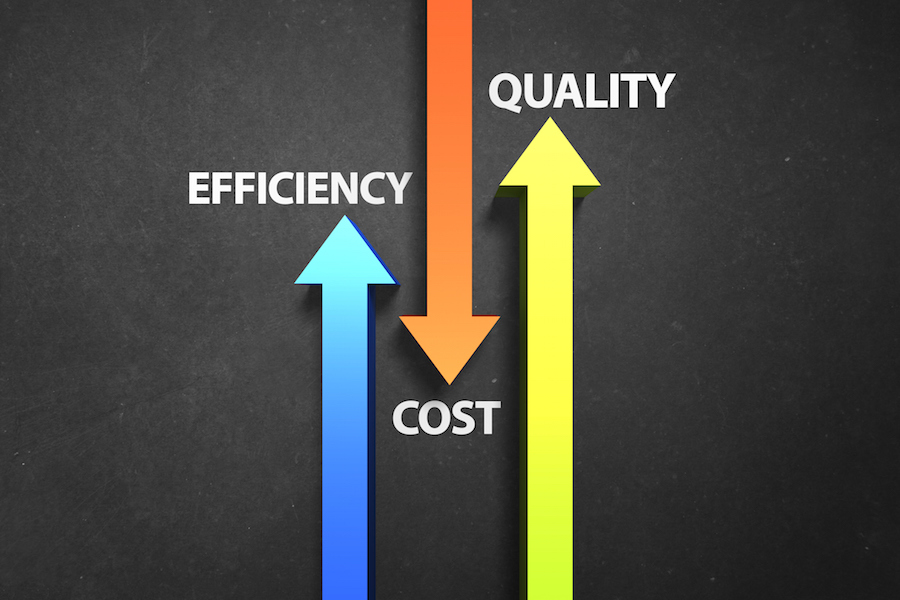May 19, 2021 by Mark Dingley
The biggest differentiator for small and medium-sized manufacturers is quality. Get it right and it will take your business to the next level; let your quality slip, however, and you could lose your customers as well as your reputation.
Automation could be the key to improving your product quality. It can enhance quality control (QC) by ensuring consistency and preventing sub-par products from leaving your factory. The leads to happier customers who are more loyal, leading to a happier and more profitable business.
In other words, an investment in quality is an investment in your future.
Fortunately, technology is more affordable and more flexible than ever. If the goal is improving product quality, there’s really no excuse for SME manufacturers not to embrace automation as a part of their manufacturing processes.

It’s a fact that humans make mistakes. If you’re relying on your employees to inspect your goods, it could be time to invest in some inspection equipment. Inspection technology can be used to inspect your goods for packaging errors, potential contamination (such as metal, plastic, and so on) and quality standards whilst improving efficiency along the line. This leads to fewer errors and better product consistency, which can help target cost reductions, improve customer satisfaction, and increase your bottom line.
Inspection systems can also demonstrate that reliable QA processes are in place, helping you to satisfy your customers. For some retail customers, like the major supermarkets, it can even be mandatory. Woolworths Quality Assurance (WQA), for example, requires that all Woolworths-branded products are, at a minimum, subjected to metal detection to determine if any products have become contaminated with foreign items.
Types of inspection technology include:
Inspection technology in action – Check out how TriMas Corporation uses vision technology to reliably identify parts, improve quality and eliminate the possible need to defect pass onto the next stage.
The rules around coding are becoming increasingly strict; you need to print date, batch and bar codes in a certain format and in a certain position, as well as ensure that they can be easily scanned. Get it wrong and customers might reject your products; get it right and you could build a reputation as a reliable supplier.
This is where coding technology comes into play. At its most basic level, this technology makes sure that the right code is applied to the right product – and that it will possess the precision retailers demand. As with all automation technology, it also gives you the opportunity to improve your quality processes and overall efficiency (which is not something than an SME should take lightly).
Types of coding technology include:
Coding technology in action – Learn how Maipac, a family-owned business that makes Nespresso compatible capsules, used coding technology to provide a high-quality solution.
Are you sure your labels are up to scratch? FSANZ has been notified of 608 food recalls from the 2007-2016 period, with more than a third of these (36%) from incorrect labelling. Many SMEs rely on their employees to manually label products, which is time consuming and labour intensive, plus it can compromise product quality. The wrong label could be placed on goods, they could be poorly presented, or the label might be missing entirely.
Labelling technologies can allow you to automate this process, thereby improving product quality. Even better, they can help you to improve efficiencies, saving you time and labour in order to create a Lean business.
Types of labelling technology include:
Labelling technology in action – Find out how the best gelato maker in Australia, Messina, uses an automated labeller to improve their product quality and save as much as 2 hours per day in manual labour.
So, what’s next?
Do your research in order to understand which technology will drive quality and process improvement for your business, whilst deliver the best return on investment (ROI).
Whilst it might be difficult to justify the cost of investing in such technology when dealing with small production numbers, it’s important to consider the future – for example, will you soon be increasing volume output? If so, your manual operators may no longer be able to keep up with demand. This can quickly compromise on your accuracy and consistency. With the right technology, however, you can maintain high quality whilst driving some significant cost savings.
This is why leasing equipment can be a smart option for small to medium SME manufacturers. It will allow you to access new-generation technology, whilst making your line more efficient and productive – all without the upfront cost of buying your equipment outright.
Whilst technologies that improve your product quality are truly worth the investment, knowing where to start can be overwhelming for small to medium SME manufacturers. This is why Matthews Australasia helps you to take a step-by-step approach for identifying your needs and goals, selecting the right equipment, and implementing technologies that will improve product quality as well as your business as a whole.